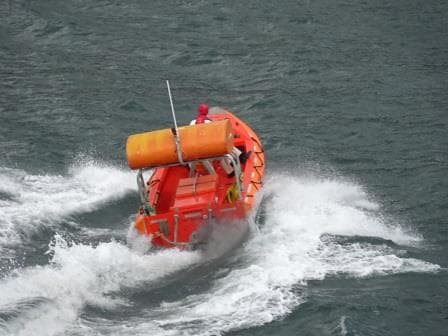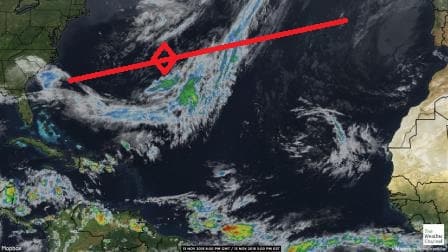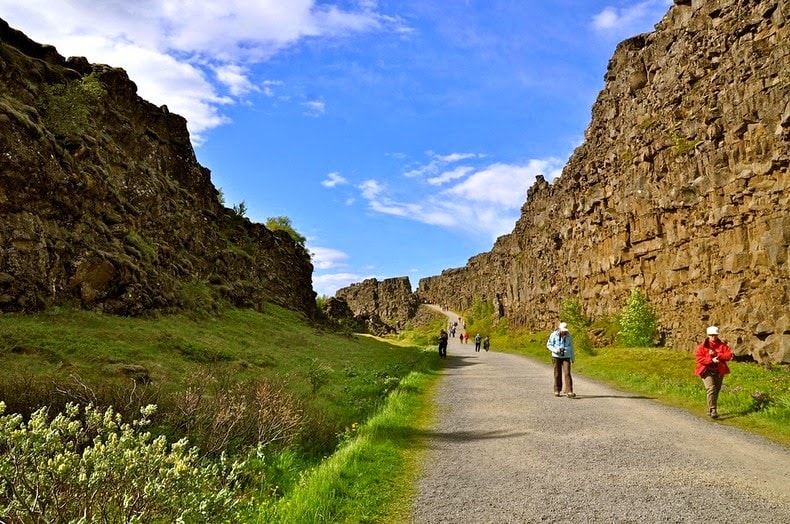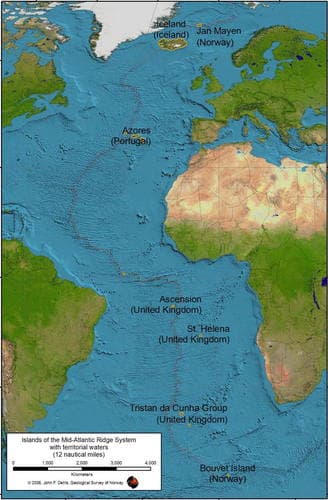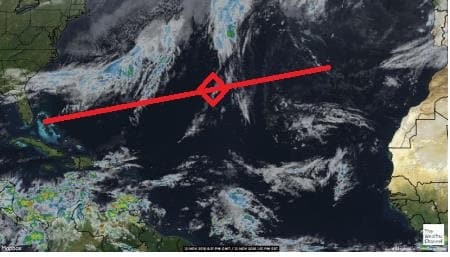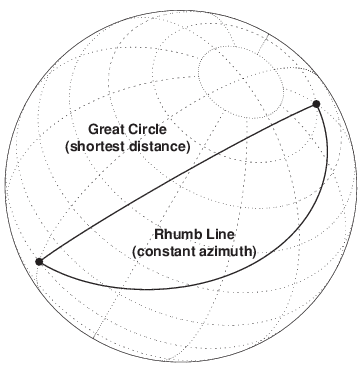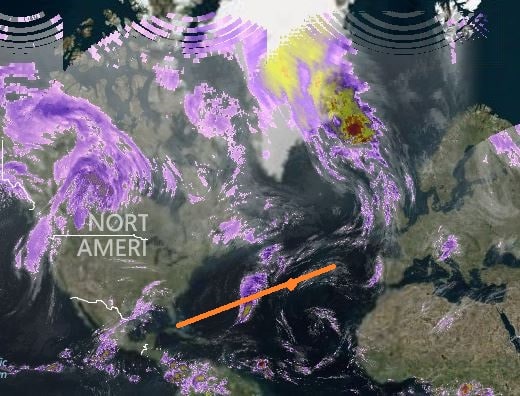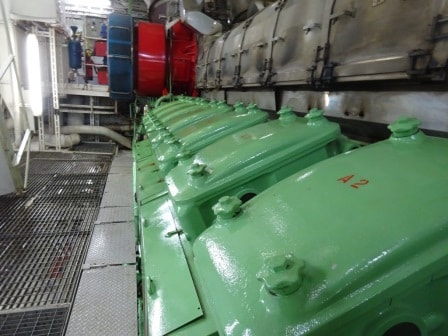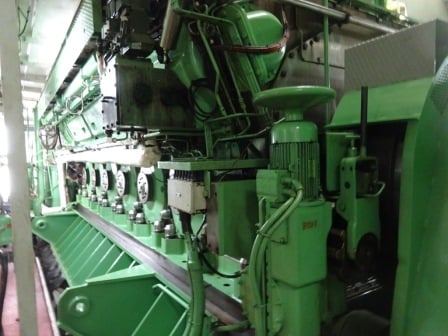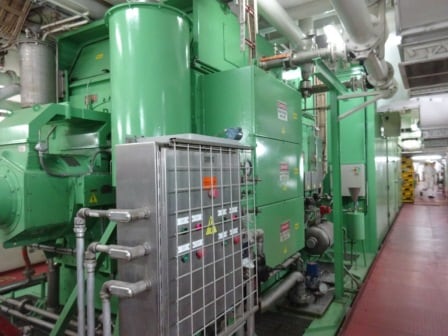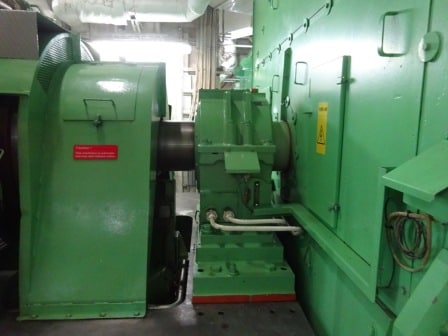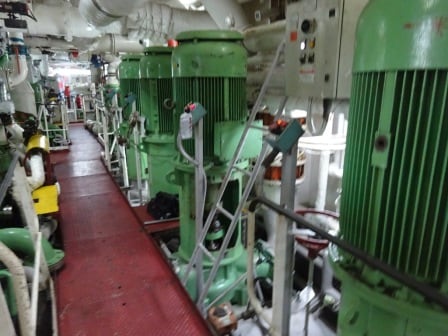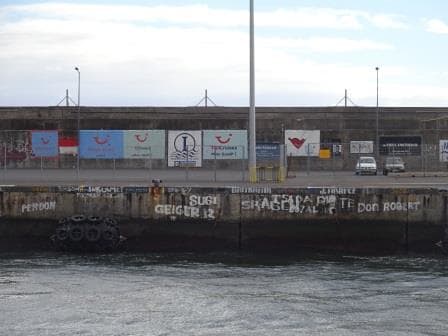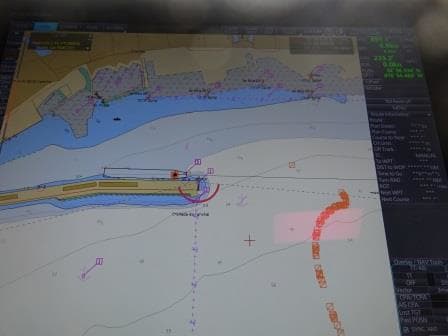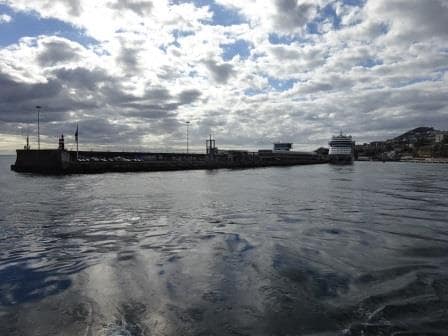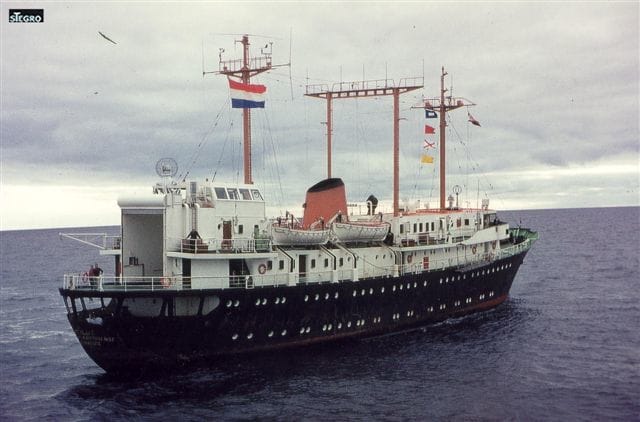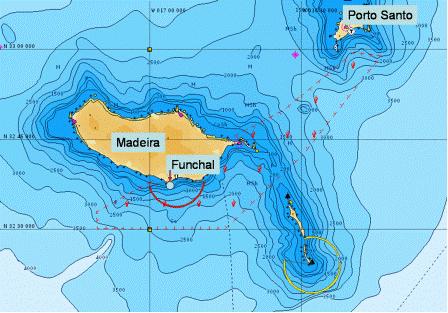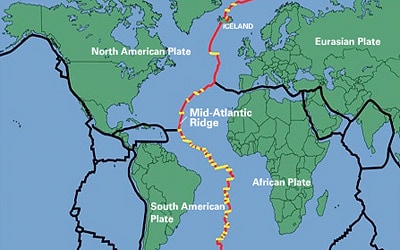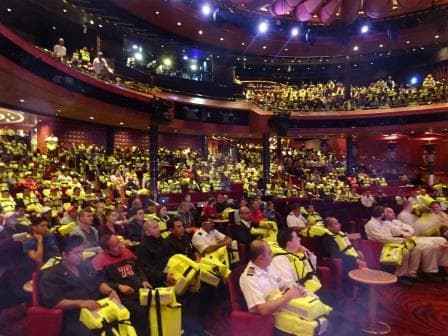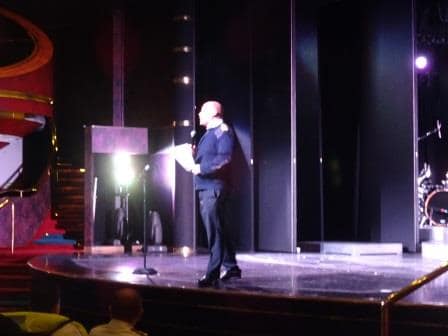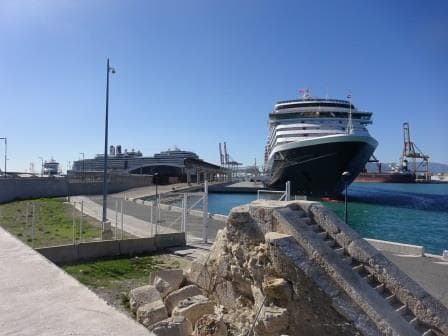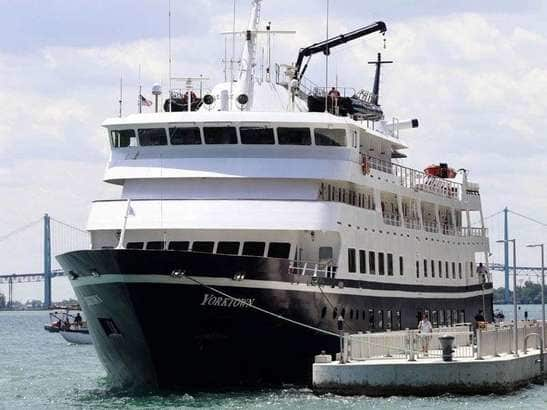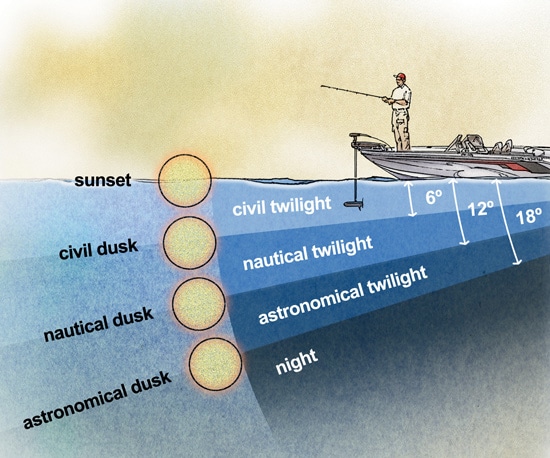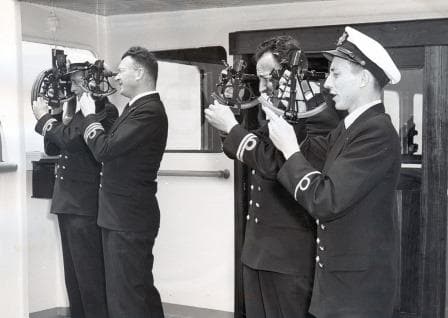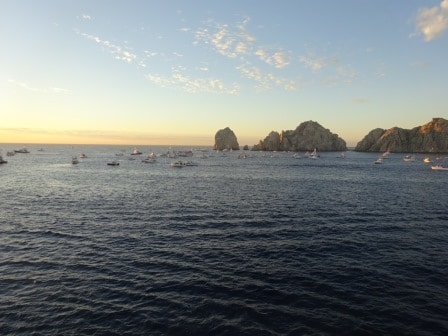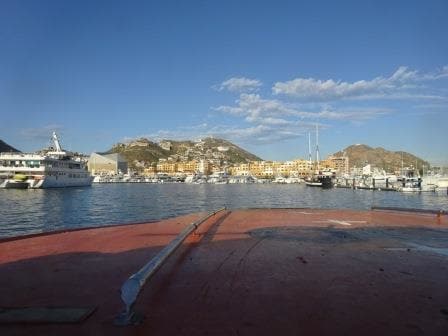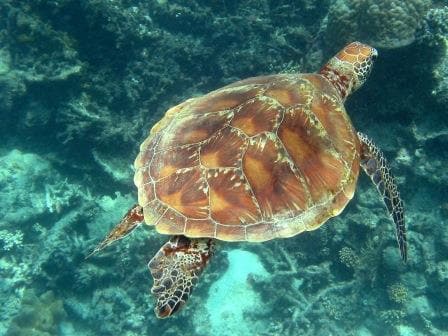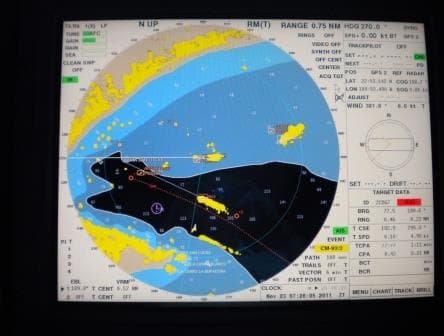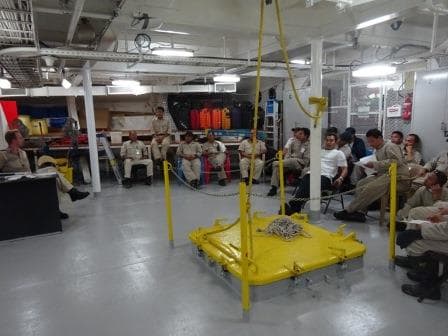We still have nice weather but now it is overcast and a bit gloomy. Although the weather system with the thunder storms pulled north and dissipated, another one developed but this curved nicely behind us but it pushed enough clouds towards us to have an overcast and grey looking sky. Because the sun cannot get through the sea look a bit grey as well and that makes for a gloomy day. But no complaints, nobody is sea sick. We do not want sea sick people as it upsets the Bar Manager as the revenue goes down and it upsets the Cast in the Show room at Sea as they then have to perform for empty chairs. Entertainers do not like that very much.
Going back to yesterday and the Fast Rescue Craft. As you can see from the picture it is a very nice and very fast speedboat, pushed forward by a water jet. It appeared first on the cargo ships and there is was a wonderful invention as it gave a cargo ship captain a very good tool to get a boat down quickly to offer help. Before that they had to lower a regular lifeboat. Cruise ships also had regular lifeboats but at least two of those boats had winches which could go at double speed, to lower or hoist very fast. But they were still lifeboats, and lay as a cork on the waves and bounced all over the place as they were really designed only to be operated with a full complement of survivors. So when we had to rescue people or do anything else we lowered a tender. Two engines and not very maneuverable.
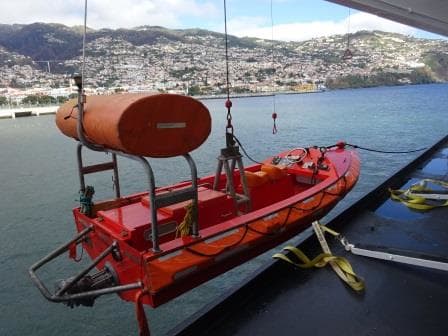
The ps Fast Rescue boat of the ms Oosterdam. The orange drum on the top is a sort spoiler, meant to keep the stern down for better water flow.
Thus we were also looking forward to getting Fast Rescue boats. And when they came, the officers liked them. Boys with toys. Great to play with. There was only one challenge, the Boats only seat three people and then there is not much room left. And we prefer to go down in the water with a medical person with us, quite a bit of medical gear and if possible a stretcher as well. So through the years it showed that these boats were not so ideal for our kind of operation. To get that sort of thing changed takes some time but eventually the situation was reviewed and a decision was made about how to make it better.
The Koningsdam is now the first ship which has a modified lifeboat which works well. Its main purpose is still being a lifeboat but it can act as a Man Overboard Boat or M.O.B. (That name is still from the old days; now we also loose women overboard and thus it should really be renamed in a Person Overboard Boat or P.O.B. However that might take a while to trickle through in maritime legislation.) What is different to this lifeboat is, it lays deeper in the water and it has a bow thruster, just like a big ship. When the boat is kept in position while offering help, it is much easier to keep the bow also under control and provide a nice stable platform to get a person out of the water or to transfer a patient from another ship. I played a little bit with that boat while I was on the Koningsdam and it all seemed to work very well.
Maybe one day they will retrofit all the ships which such a lifeboat but for the time being we still have on the Oosterdam a Fast Rescue Boat. Much to the delight of the deck officers, who have absolutely no problems for volunteering for the monthly test run.
Just while I was hoping that all was going to be plain sailing to Tampa, we have to be alert again. A system is developing, which could change into a storm, and could change from a storm into something worse and then go the direction of Tampa. We will keep a close eye out and time will tell what is going to happen, or not.
Tomorrow we still have a normal quiet day and we should have a super moon to look at. The last time there was one was in 1942 and thus I have also never seen one. I hope that the clouds break up so we can see something.
